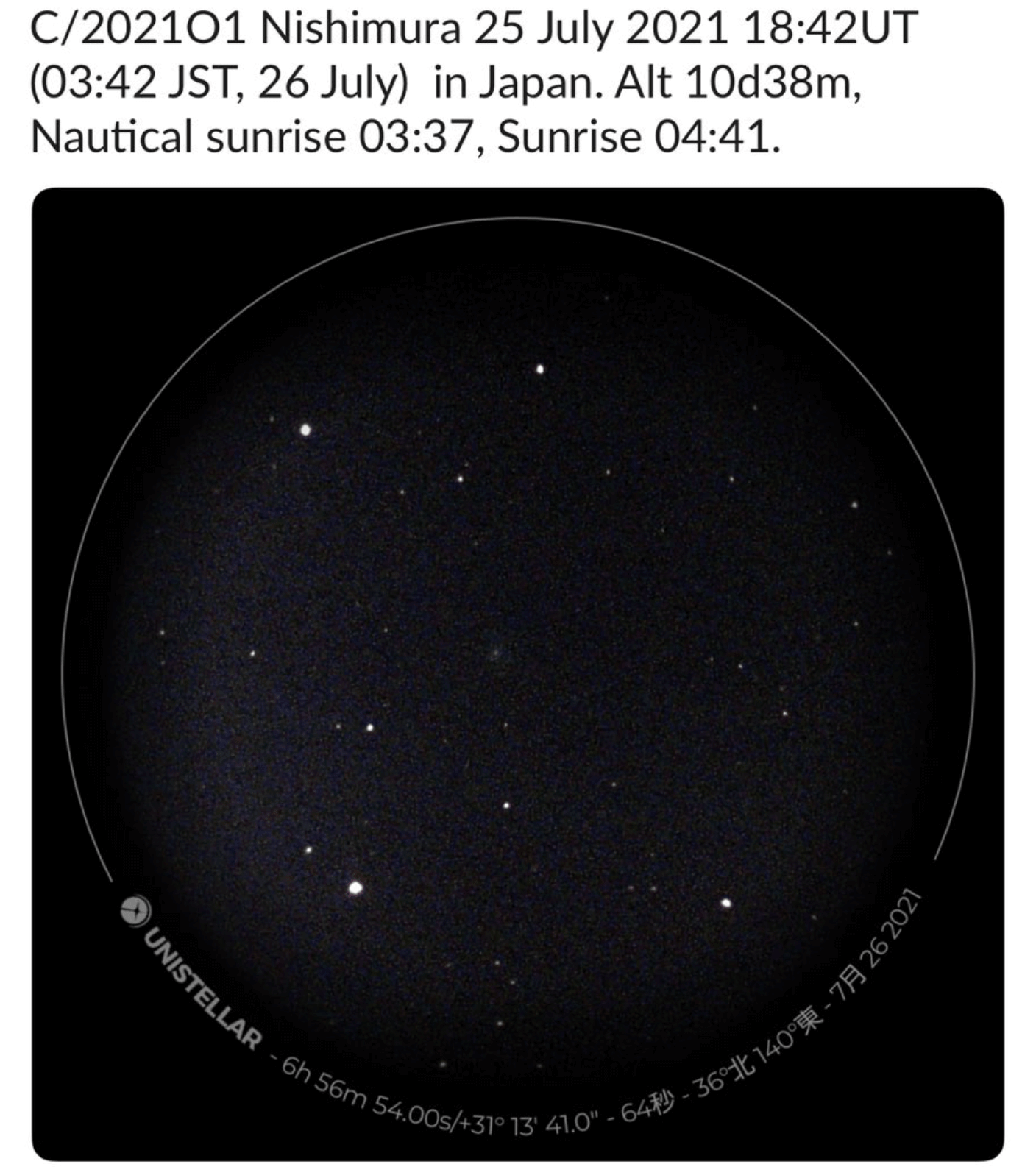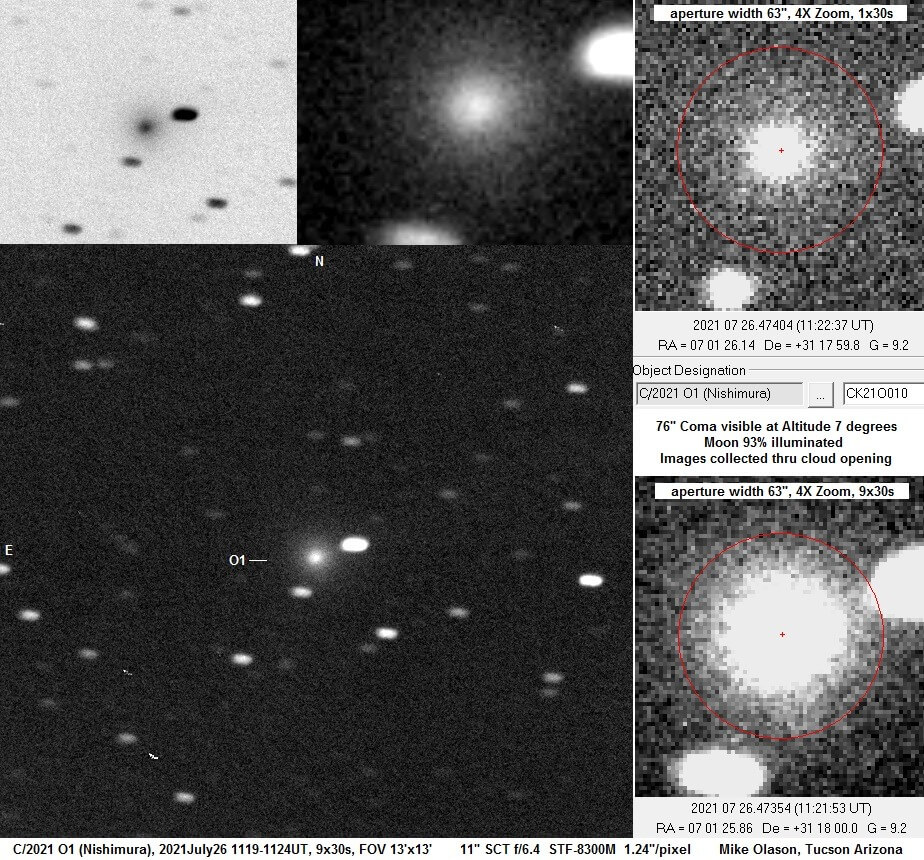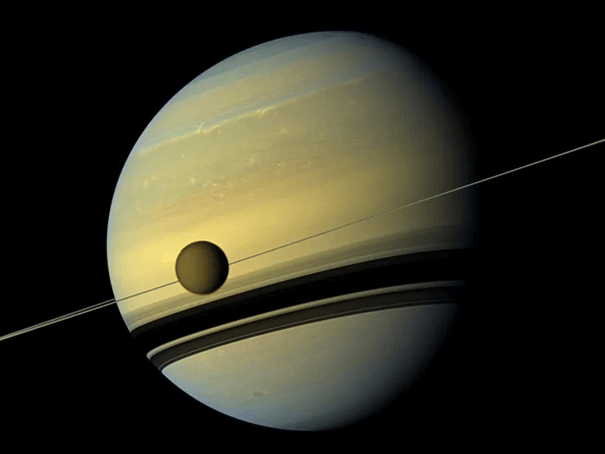A new comet was discovered by amateur astronomer Hideo Nishimura of Japan on July 21, who used his DSLR and a 200 mm telephoto lens for the impressive discovery. Now known as Comet C/2021 O1 Nishimura, it was also observed this week from Japan by Keiichi Fukui using a Unistellar eVscope (below).

According to the Central Bureau for Astronomical Telegrams announcement, “Hideo Nishimura, Gansho-ji, Kakegawa (near Yuto), Japan, reported that he found a comet on three 15-s exposures taken on July 21.8 UT with a Canon EOS 6D digital camera + 200-mm-f.l. f/3.2 lens, the comet showing a diffuse 2′.5 coma with central condensation. Nishimura suspected that this might be an outburst of comet 8P/Tuttle (though the latter comet is located +1.96 degrees in R.A. and -0.25 degree in Decl. from Nishimura’s comet). His discovery observations are tabulated [at this link], together with confirming observations that he obtained on July 22.8. Nishimura was a co-discoverer of comet C/1994 N1.”
According to Mike Olason as submitted to Sky & Telescope: “In [the below] images Comet C/2021 O1 (Nishimura) was magnitude 9.2, had a 76 arc second wide coma and was 159 million miles from Earth. The images were taken when the comet was only 7 degrees above the eastern horizon just before twilight in a 93% Moon illuminated sky through a 5 minute opening in cloud cover so the comet is actually much more impressive than these images show it.”
“The comet will reach perihelion in its orbit on 12 August 2021 when it will be 74 million miles from the Sun and may brighten to magnitude 9. The comet will make its close approach to Earth on 5 August 2021 at 158 million miles,” says Olason. “The comet is moving into the morning twilight so if one wants to view it or image it they should do so in the next week before it becomes lost in the morning twilight and then moves behind the eastern horizon the second week of August.”

Image: Mike Olason, submitted to Sky & Telescope
Photographer: Mike Olason
Location of Photo: Tucson, Arizona
Date/Time of photo: 26 July 2021, 1119 UT
Equipment: 11″ SCT and STF-8300M CCD Camera
Further readings
3 Reasons to observe this month
Every month, discover three unmissable celestial events to observe with your Unistellar telescope.
Two spooky appearances in the sky for Halloween
Every month, discover three unmissable celestial events to observe with your Unistellar telescope.
3 Reasons to observe this month Halloween Edition
Every month, discover three unmissable celestial events to observe with your Unistellar telescope.
Titan’s shadows
This summer, the ringed planet Saturn takes centre stage in our night sky, offering amateur astronomers a rare opportunity to observe fascinating transient events.
Observing Eclipses on Jupiter: Cosmic Spectacles Through a Telescope
The latest Unistellar App Update, version V3.0, is now live. Explore a smooth stargazing experience !
Unistellar Community Included In Multiple Scientific Papers
Did you know Unistellar Citizen Astronomers are often cited in published scientific papers? Find out how you can contribute too!




